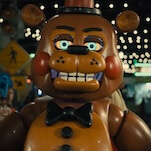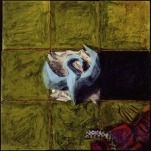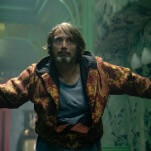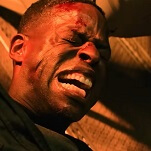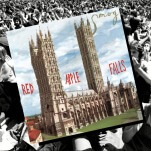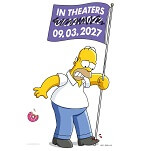Tom Clancy’s The Division is a lot like the Wall Street fat cats and elitist private military companies its muddled political narrative tries to listlessly denounce: ethically hollow, ruthlessly manipulative, and likely to make a ton of money by satisfying the basest requirements of those who stumble toward it with cash in hand. The resulting game, a third-person shooter fitted with online role-playing-game trappings, might be the shiniest Skinner box ever designed by man. It’s an addictive and almost completely mindless way to trade hours of your time for a vague sense of accomplishment and brief moments of dopamine-inducing delight.
The game’s minimal plot focuses on the outbreak of a deadly superflu in New York, with the player working as a member of a shadowy government group (identified by their snazzy orange smartwatches) tasked with doing anything necessary to clean it up. “Anything necessary,” it quickly becomes clear, mostly meaning “kill everyone you see, while a handful of drab characters bark exposition about vaccines, power grids, and turrets.” That’s not to say The Division is devoid of good writing. Small human moments creep in when the player bothers to go looking for them, but that opt-in approach to narrative—which extends to the game relegating major chunks of the story to optional post-mission cutscenes, shruggingly offered up to interested parties—makes it clear that storytelling is secondary to the game’s primary goal: Keep people playing, keep people shooting, keep people hunting for loot.
And that shooting is handled relatively well. Firefights are cover-based, so you plant yourself behind a concrete divider or piece of construction equipment, and you’re functionally invincible until you pop out to shoot or an enemy flanks you. Skirmishes vary between short and long range, meaning that the well-armed Division agent usually has a sniper rifle to complement the shotgun or assault rifle they keep on hand for close-quarters work, and players can take command of the battlefield by deploying skills like automated turrets and healing stations to turn the tide of a fight. Meanwhile, you can customize your fighting style through gear and various special skills and perks—provided you’ve earned enough experience to unlock the requisite slots or higher-tier equipment.
It’s those role-playing-game elements that threaten The Division’s appeal as a competent shooter. The foes that populate snowy, disease-ravaged New York all have experience levels (and ranks within those levels), and challenging an opponent whose numbers are bigger than your numbers is a recipe for unpleasantness. The under-leveled or poorly outfitted player can expect to have their health torn through in seconds, while their suddenly pitiful guns barely scratch their enemies’ armor. The only answer to this literal arms race is bigger and better loot, and it’s here that The Division reveals its mercenary, feedback-loop-loving heart.
Here’s how a standard two-hour stint with The Division typically plays out: Player enters a combat zone. Player bounces off of difficult enemy. Player is given or discovers a piece of gear or a new gun whose numbers are big enough to tilt the balance in their favor. Player feels a rush as they mow through the previously difficult opponent and progress into a higher-level combat zone. Repeat until bored or too bleary-eyed and sleep-deprived to stay awake.
The naked manipulation of this system—which, to be fair, is shared with almost every other massively multiplayer game on the planet—is meant to be alleviated by the company of others, and it’s true that The Division gets more interesting when other human beings show up to cut through the rioter-murdering tedium. It’s fundamentally fun to accomplish tasks with a friend (or even while basking in the camaraderie of strangers provided by the game’s thoroughly competent matchmaking system), and The Division is happy to offer up a backdrop for you to shoot the shit (and some faceless mooks) with your online buddies. Even after all the story fights are completed, the game will obligingly cough up Daily Missions, retreads of past outings that can be completed in exchange for bonus currency, which can be spent on even bigger and better stuff.
It’s the other, mostly post-game multiplayer side that gives The Division its few real sparks of inspiration: the extra-lawless Dark Zone, the only part of New York that feels as dangerous as a mid-apocalypse metropolis should be. The Dark Zone is the only place (outside of safe houses) where you’ll see other human players that you aren’t in a group with, roaming the territory, battling enemies, and maybe opening fire on you to steal your loot. That’s encouraged by the game, with a few clever bits of design; all the best stuff is tucked away in the Zone, and it can only be safely extracted by triggering a two-minute timer that paints a target on your back as you wait for a chopper to arrive.
It’s in those moments—as computer-controlled enemies mount on the perimeter, and non-hostile-for-now human players shuffle in to “help” with the extraction—that The Division goes from “fine” to “interesting.” Suddenly, the game has actual stakes, as everyone seeks to hold onto their new stuff, which is so easily lost once a firefight breaks out. There are moments of heroism, where complete strangers drag each other back to their feet instead of watching them die and picking over their gear. And there are periods of unbelievable tension, as people simply watch each other, waiting to see who goes for their gun first and initiates a bloodbath.
The Division is a brutally mechanistic game, right down to having one of Ubisoft’s now-signature giant maps full of icons and a GPS that leads you from point to point with no need for actual thought. It throws thousands of faceless opponents at its players, distinguished only by the numbers and icons floating over their heads as they’re fed into the meat grinder of their guns. It is polished and rote, with every rough edge sanded off in favor of keeping players guided in lockstep down its loop of continuous, primitive satisfaction. And yet, in those brief moments in the Dark Zone when actual human choice and feelings come into play, it feints toward something new. It’s a pity those moments represent only a tiny fraction of what The Division has to offer.



